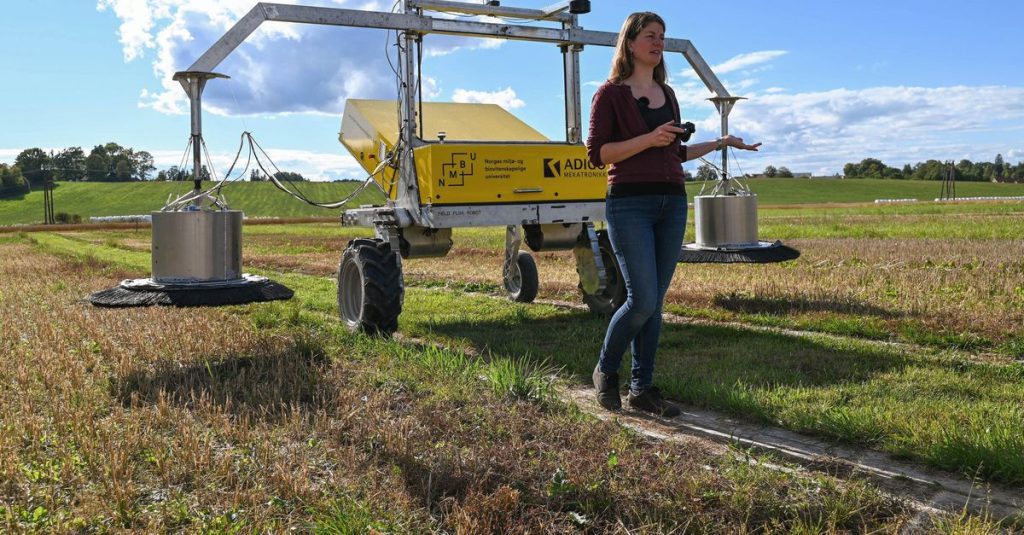Fertilized farmland releases more than half the amount of the potent greenhouse gas N2O (laughing gas) when special bacteria are applied to it. This is evidenced by experiments conducted in Norway, with different types of sandy and clay soils. The study is Published this Wednesday in nature.
In global warming, nitrous oxide has, compared to the greenhouse gas carbon dioxide2 and methane (CH4), a small share – about 6 percent. But in agriculture, laughing gas plays a relatively major role. One-third of the greenhouse gases emitted by Dutch agriculture is nitrous oxide.
Laughing gas emissions have increased over the past century mainly due to the use of (synthetic) fertilisers. Although crop yields are greatly increased as a result, there are also many disadvantages. Part of the nitrogen contained in the fertilizer is released from the soil in the form of nitrous oxide. Not only is it a greenhouse gas, it also depletes ozone in the stratosphere. This increases the risk of the ozone hole, which means that people and animals are less protected against solar radiation. In addition, part of the nitrogen contained in the fertilizer is washed out in the form of nitrate (NO3–) to surface waters. It causes suffocating algae blooms and decreased biodiversity. Part of the nitrogen volatilizes in the form of ammonia (NH).3It contributes to air pollution and lung diseases in humans. In addition, excessive precipitation of ammonia harms nature.
Nitrous oxide is one of several nitrogen compounds formed in soil by microorganisms. There are bacteria that can break down nitrous oxide. “But you often see that they can form laughing gas,” says Lars Bakken, a process technology expert, professor at the Norwegian University of Life Sciences and coordinating author of the study. Bakken explains that he and his colleagues have successfully isolated a group of bacteria from wastewater that can break down nitrous oxide, but do not have the genes to produce it. “That was really lucky,” Bakken says. They then isolated a single strain of bacteria from that group, Clausibacterium sp. CB-01, which seems to survive well in soil. They are also well bred in the laboratory.
The researchers then placed different types of sandy and clay soils in buckets, placed them outdoors, and added wastewater to replace (synthetic) fertilizers. Some buckets received wastewater to which cultured bacteria were also added. Laughing gas emissions from the buckets were measured for ninety days. In buckets containing bacteria, nitrous oxide emissions were 50 to 95 percent lower than in buckets without bacteria.
/s3/static.nrc.nl/images/gn4/stripped/data116310676-0df960.jpg|https://images.nrc.nl/yikjprJ4OizHrrMiBr4NHfVs5SI=/1920x/filters:no_upscale()/s3/static.nrc.nl/images/gn4/stripped/data116310676-0df960.jpg|https://images.nrc.nl/yBVAcdHnzaDCuH0XIXYWuv-ji6g=/5760x/filters:no_upscale()/s3/static.nrc.nl/images/gn4/stripped/data116310676-0df960.jpg)
Calcareous clay soil
The researchers then conducted another field experiment, adding wastewater containing bacteria to the calcareous clay soil. There, too, nitrous oxide emissions were reduced by more than half compared to soil fertilized with bacteria-free wastewater.
“It’s an amazing set of experiments,” says soil scientist Mart Ross of Wageningen University and Research, who was not involved in the research. He read the post with colleagues Doreen Westerick, Rima Puri and Jan Willem van Groenegen. They are working together on a project to reduce nitrous oxide emissions from farmland through fertilization modifications. “It can make a big difference to fertilize a crop at exactly the right time and in the right amount, and then only plants that also need something,” Ross says. They call the approach described in the post “innovative.” “Modifying the soil microbiome is a relatively unexplored area of research.” But they have strong doubts whether this approach can be implemented on a large scale. Moreover, they call him A End of tube-Solution. Laughing gas emissions result from excessive and inefficient use of nitrogen found in animal manure and fertilizers. “You can optimize that first,” Ross says. Norwegian Professor Bakken says you can do both at the same time.
The Wageningen researchers also point out that this approach has been tried on only four soil types. Not, for example, the peat soil of which the Netherlands is rich. “A lot of laughing gas is released from that,” Ross says. They also wonder whether it is possible to grow bacteria in other ways besides wastewater.
Professor Bakken says they are trying that now. They also genetically modify bacteria so that they break down nitrous oxide more specifically and efficiently.

“Coffee buff. Twitter fanatic. Tv practitioner. Social media advocate. Pop culture ninja.”











More Stories
Which can cause an increase in nitrogen.
The Central State Real Estate Agency has no additional space to accommodate Ukrainians.
The oystercatcher, the “unlucky national bird,” is increasingly breeding on rooftops.